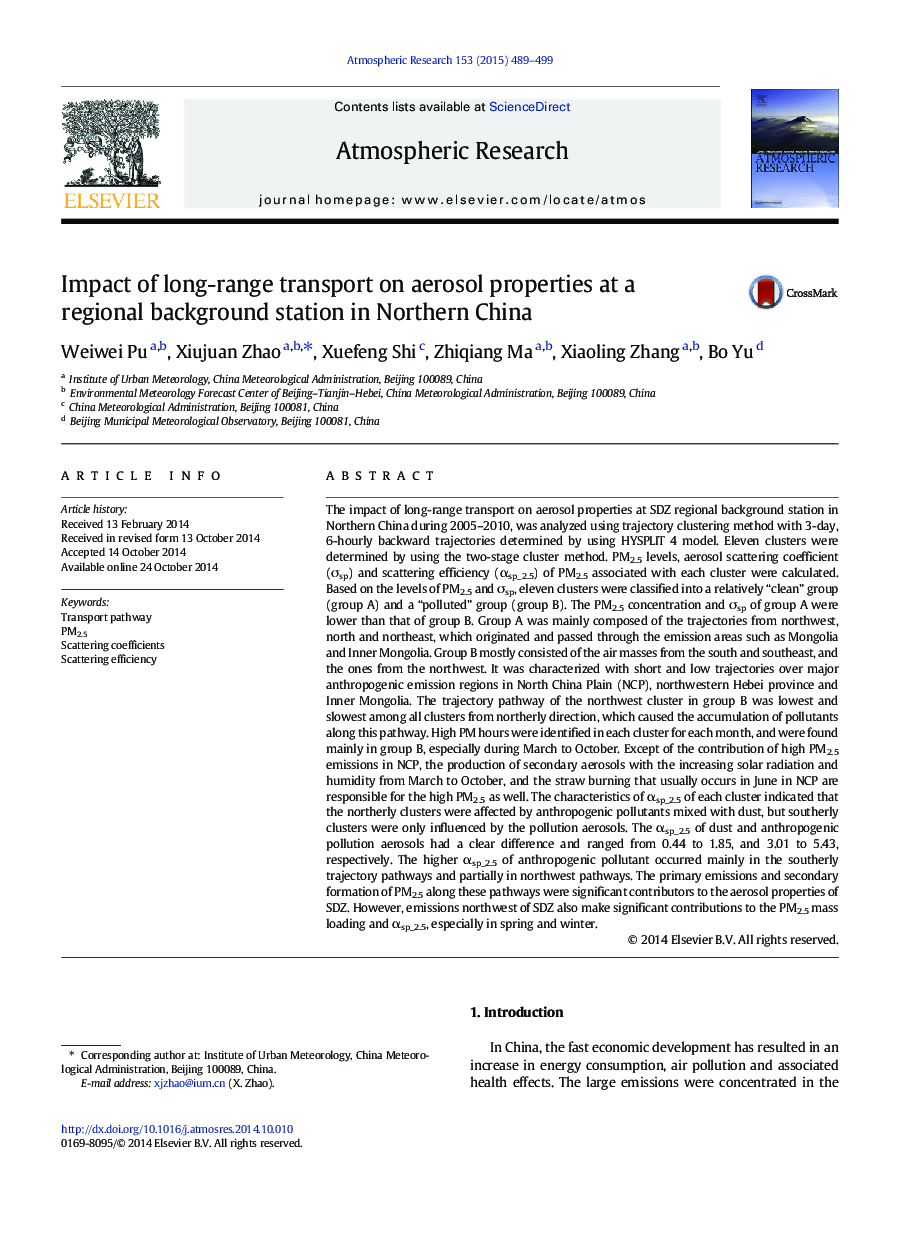| کد مقاله | کد نشریه | سال انتشار | مقاله انگلیسی | نسخه تمام متن |
|---|---|---|---|---|
| 6343450 | 1620520 | 2015 | 11 صفحه PDF | دانلود رایگان |
- Trajectories clusters are classified into "clean" and "polluted" groups.
- .The PM2.5 emissions in NCP and secondary particles formation are responsible for the higher PM2.5 and scattering efficiency
- The emission sources in the northwest Hebei province and Inner Mongolia are also important to the aerosol properties at SDZ.
The impact of long-range transport on aerosol properties at SDZ regional background station in Northern China during 2005-2010, was analyzed using trajectory clustering method with 3-day, 6-hourly backward trajectories determined by using HYSPLIT 4 model. Eleven clusters were determined by using the two-stage cluster method. PM2.5 levels, aerosol scattering coefficient (Ïsp) and scattering efficiency (αsp_2.5) of PM2.5 associated with each cluster were calculated. Based on the levels of PM2.5 and Ïsp, eleven clusters were classified into a relatively “clean” group (group A) and a “polluted” group (group B). The PM2.5 concentration and Ïsp of group A were lower than that of group B. Group A was mainly composed of the trajectories from northwest, north and northeast, which originated and passed through the emission areas such as Mongolia and Inner Mongolia. Group B mostly consisted of the air masses from the south and southeast, and the ones from the northwest. It was characterized with short and low trajectories over major anthropogenic emission regions in North China Plain (NCP), northwestern Hebei province and Inner Mongolia. The trajectory pathway of the northwest cluster in group B was lowest and slowest among all clusters from northerly direction, which caused the accumulation of pollutants along this pathway. High PM hours were identified in each cluster for each month, and were found mainly in group B, especially during March to October. Except of the contribution of high PM2.5 emissions in NCP, the production of secondary aerosols with the increasing solar radiation and humidity from March to October, and the straw burning that usually occurs in June in NCP are responsible for the high PM2.5 as well. The characteristics of αsp_2.5 of each cluster indicated that the northerly clusters were affected by anthropogenic pollutants mixed with dust, but southerly clusters were only influenced by the pollution aerosols. The αsp_2.5 of dust and anthropogenic pollution aerosols had a clear difference and ranged from 0.44 to 1.85, and 3.01 to 5.43, respectively. The higher αsp_2.5 of anthropogenic pollutant occurred mainly in the southerly trajectory pathways and partially in northwest pathways. The primary emissions and secondary formation of PM2.5 along these pathways were significant contributors to the aerosol properties of SDZ. However, emissions northwest of SDZ also make significant contributions to the PM2.5 mass loading and αsp_2.5, especially in spring and winter.
Journal: Atmospheric Research - Volume 153, February 2015, Pages 489-499
